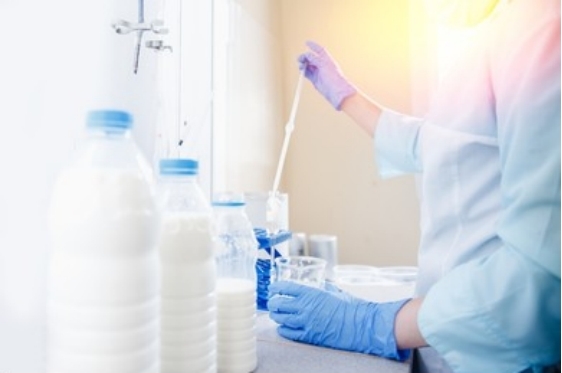Lifeasible offers services to help detect various components in milk and milk products. Here we offer professional milk fat determination services to help determine the fat content.
Milk fat is a variable component of milk. The content of milk fat is an important indicator of milk quality and value. The milk fat content can vary between 3% and 6% but is usually between 3.5% and 4.7%. Milk fat impacts the nutritional, physical, and chemical properties of milk and its purchase ability. Too low a fat content in milk can lead to a nutritional deficiency in milk. Excess milk fat can affect the taste and quality of milk. The main component of milk fat is triacylglycerols (TAGs), which account for approximately 97 - 98% of the total milk fat, in addition to diacylglycerols, phospholipids, free fatty acids, and cholesterol. Detecting milk fat can help milk processing and improve production efficiency.
 Fig. 1 Determination of fat content.
Fig. 1 Determination of fat content.
Lifeasible specializes in milk-related testing and offers services to help detect fat in milk and milk products. We offer three main methods to help detect total fat in milk. We mainly used the gravimetric method for the total fat of milk products.
Alkaline hydrolysis method/ Rose-Gottlieb method/ Gravimetric method
In this method, the milk sample is first hydrolyzed by ammonia. Subsequently, ethanol is added. Then the fat is extracted with diethyl ether and light petroleum. Finally, the fat content is weighed after evaporation of the solvent. This method can detect raw cow milk, raw goat milk, raw sheep milk, reduced-fat milk, skimmed milk, chemically preserved milk, and processed liquid milk.
Operation flow:

Main reference standards:
ISO 1211:2010
ISO 7208:2008
Butyrometric method/ Gerber method / Volumetric method
The butyrometric technique is much simpler and allows for a rapid determination of the fat content of milk. This method is used by many industrial laboratories as a rapid method for routine checks. The method starts with the digestion of the proteins in the milk with sulfuric acid. Subsequently, the fat in the milk is separated by centrifugation using a butyrometer. At this step, a small amount of isoamyl alcohol is added to enhance the separation. The fat content information is then obtained by directly reading the butyrometer scale. The method can test liquid milk, fully or partially skimmed milk, raw or pasteurized milk, and milk containing certain preservatives.
Operation flow:

Main reference standards:
ISO 11870:2009
ISO 19662:2018
The determination of fat content in milk by infrared spectroscopy gives fast and accurate results without using chemical reagents. It determines the fat content of milk by analyzing its infrared spectrum and can obtain results within minutes. Infrared spectroscopy suits a wide range of samples, including skimmed milk with less fat content. We help detect milk fat and analyze fat content using advanced infrared spectroscopy instruments.
Sample range:
A. Evaporated milk
B. Sweetened condensed milk (liquid-sweetened and unsweetened concentrated milk)
C. Dried milk and dried milk products (dried whole milk, dried partially skimmed milk, dried skimmed milk, dried whey, dried buttermilk, and dried butter serum)
D. Milk-based products for bakery purposes or infant
E. Milk-based edible ices and ice mixes
Methods:
Rose-Gottlieb gravimetric method
Weibull-Berntrop gravimetric method
Butyrometric method
Main reference standards:
ISO 11870:2009
ISO 1736:2008
ISO 1737:2008
ISO 8262-1:2005
ISO 8262-3:2005
ISO 7328:2008
Lifeasible specializes in milk-related testing and offers services to help detect total fat in milk and milk products. We mainly refer to international standard methods in our services. Please contact us for professional milk total fat determination services.
References